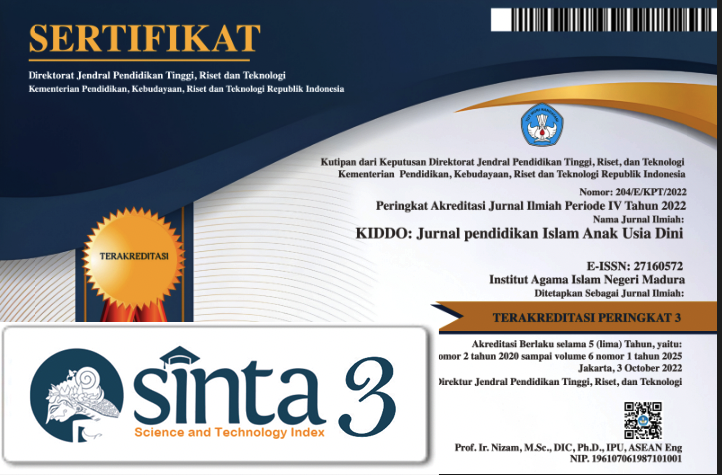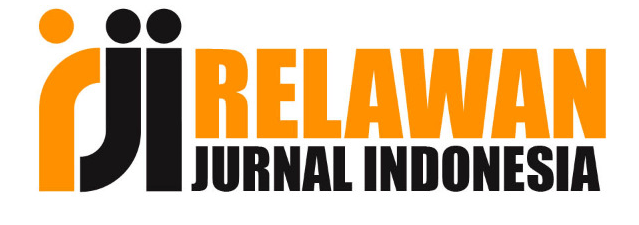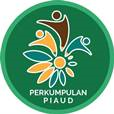Relevansi Prinsip Kesopanan Leech dengan Pendidikan Karakter pada Tuturan Guru dalam Interaksi Pembelajaran Siswa Usia Dini
 Abstract views: 99
,
Abstract views: 99
,
 PDF downloads: 77
PDF downloads: 77
Abstract
This research aims to discuss the extent to which politeness strategies are applied by teachers and students in classroom interactions and to analyze the types of politeness maxims based on the theory proposed by Geoffrey Leech. The method used in this research is qualitative with a descriptive approach. The research subjects involved are 1st-grade elementary school students, educators, educational staff, and parents of students at SDI Al Uswah Pamekasan. The findings of this research consist of the distribution of maxims analyzed based on Leech's politeness principles theory, with the percentage of usage of politeness principles and the 6 maxims of the politeness principle of tact ranking highest in their usage in conversations between teachers and students during the course of learning. The six maxims proposed by Leech include the maxim of tact, the maxim of generosity, the maxim of praise, the maxim of modesty, the maxim of agreement, and the maxim of sympathy. The conclusion of this research is that each maxim proposed by Leech can be found in the interaction process between teachers and students, with language delivery based on the principle of politeness.
Downloads
References
Bogdan, Robert C., dan Sari Knopp Biklen. 2007. Qualitative Research for Education: An Introduction to Theories and Methods. 5th ed. Boston, USA: Pearson Education.
Brown, Penelope, Stephen C. Levinson, dan John J. Gumperz. 1987. Politeness: Some Universals in Language Usage. Reissue edition. Cambridge Cambridgeshire ; New York: Cambridge University Press.
Culpeper, Jonathan. 2011. “Politeness and Impoliteness.” Dalam Sociopragmatics, 5:391–436. Berlin: Mouton de Gruyter.
Denham, Kristin, dan Anne Lobeck. 2010. Linguistics for Everyone: An Introduction. 2nd ed. Boston, USA: Wadsworth.
Duhita, Arinanda Alma, dan Ida Zulaeha. 2018. “The Politeness Speech of Primary School Teacher in the Character Building of Learners.” Seloka: Jurnal Pendidikan Bahasa Dan Sastra Indonesia 7 (2): 112–21. https://doi.org/10.15294/seloka.v7i2.25182.
Jannedy, Stefanie, Robert Poletto, dan Tracey L Weldon, ed. 1994. Language Files. 6th ed. United Stated: Ohio State University Press.
Leech, Geoffrey. 2014. The Pragmatics of Politeness. OUP USA Oxford Studies in Sociolinguistics.
Leech, Geoffrey N. 1983. Principles of Pragmatics. New York: Longman.
Ramadania, Fajarika. 2016. “PEMBENTUKAN KARAKTER SISWA DENGAN MEMANFAATKAN PRINSIP KESANTUNAN PADA TUTURAN DIREKTIF DI LINGKUNGAN SEKOLAH.” Stilistika: Jurnal Bahasa, Sastra, dan Pengajarannya 1 (1): 8.
Rohali, Rohali. 2011. “LINGUISTIC POLITENESS AS A PILLAR OF CHARACTER BUILDING: A SOCIO-PRAGMATIC PERSPECTIF.” Jurnal Pendidikan Karakter, 24.
Umayah, Siti, I.N.A Putra, dan G.A.P Suprianti. 2017. “POLITENESS STRATEGIES IN TEACHERSTUDENTS CLASSROOM INTERACTION AT THE ELEVENTH GRADE STUDENTS OF SMK PGRI 1 SINGARAJA.” Jurnal Pendidikan Bahasa Inggris Undiksha (JPBI) 5 (2). https://ejournal.undiksha.ac.id/index.php/JPBI/article/view/13474/8443.
Wati, Dyah Rohma. 2015. “PENDIDIKAN KARAKTER DAN KAITANNYA DENGAN KESANTUNAN BERBAHASA.” Prosiding Prasasti, 6.
Widyawari, Caecilia Petra Gading May, dan Ida Zulaeha. 2016. “REPRESENTASI IDEOLOGI DALAM TUTURAN SANTUN PARA PEJABAT NEGARA PADA TALK SHOW MATA NAJWA.” Seloka: Jurnal Pendidikan Bahasa Dan Sastra Indonesia 5 (1). https://doi.org/10.15294/seloka.v5i1.12737.
Yule, George. 2014. The Study of Language. Cambridge University Press.
Zamzani, Zamzani, Tadkiroatun Musfiroh, Siti Maslakhah, dan Ari Lisyorini. 2011. “PENGEMBANGAN ALAT UKUR KESANTUNAN BAHASA INDONESIA DALAM INTERAKSI SOSIAL BERSEMUKA” 10: 16.
Copyright (c) 2024 Fithriyah Rahmawati, M.Pd.

This work is licensed under a Creative Commons Attribution 4.0 International License.
-
The journal operates an Open Access policy under a Creative Commons 4.0 International license. The terms of the license are:
Share— copy and redistribute the material in any medium or format
Adapt— remix, transform, and build upon the material for any purpose, even commercially.
1. Authors retain copyright and grant the journal right of first publication with the work simultaneously licensed under a Creative Commons License.that allows others to share the work with an acknowledgement of the work’s authorship and initial publication in this journal
2. Authors are permitted and encouraged to post their work online (e.g., in institutional repositories or on their website) prior to and during the submission process, as it can lead to productive exchanges, as well as earlier and greater citation of published work (See The Effect of Open Access).
Jurnal Kiddo is licensed under a Creative Commons
n Access).














